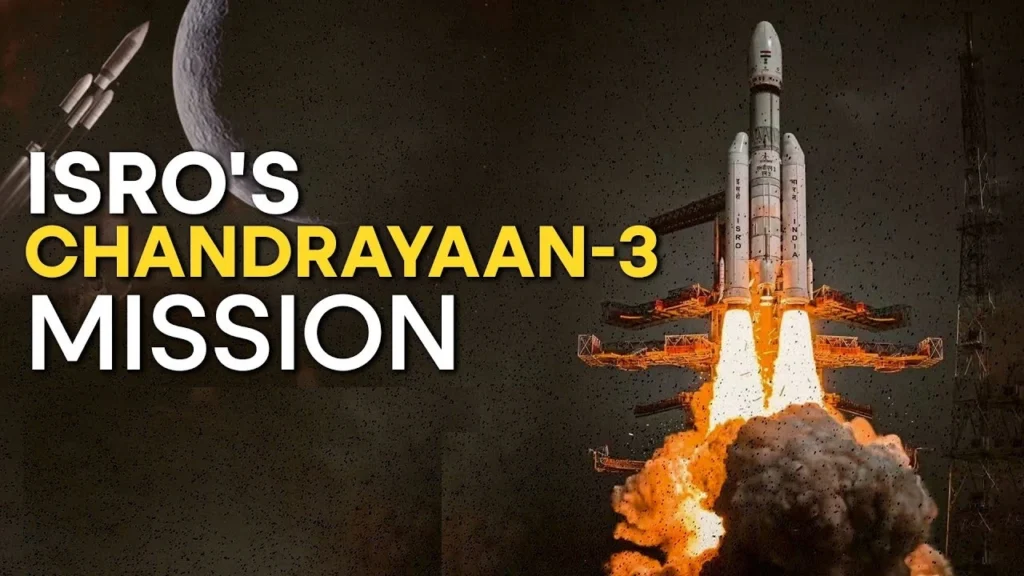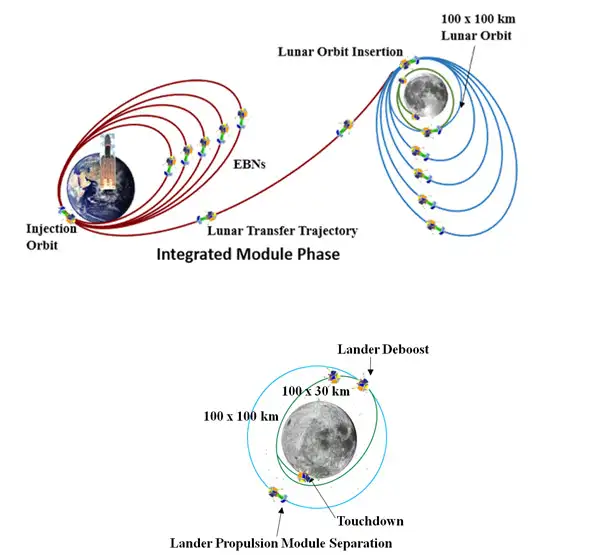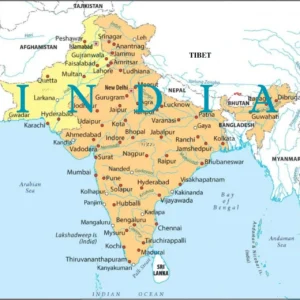India’s Chandrayaan-3 Successfully Lands on the Moon: A Historic Achievement
10 August 2023India’s Chandrayaan-3 Successfully Lands on the Moon: A Historic Achievement

Introduction
On August 23, 2023, a remarkable event unfolded in India’s space exploration journey. Chandrayaan-3, a spacecraft designed for lunar exploration, successfully landed on the Moon’s surface. This moment marked a significant advancement for India in space science and demonstrated the nation’s growing expertise in exploring outer space.
What is Chandrayaan-3?
Chandrayaan-3 is a significant lunar exploration mission led by the Indian Space Research Organization (ISRO). Building on the success of previous Chandrayaan missions, its goal is to study the Moon’s surface, composition, and geological features. The mission comprises an orbiter and a lander equipped with scientific instruments to gather crucial data. Chandrayaan-3 reflects India’s growing expertise in space exploration and its commitment to advancing our understanding of the lunar environment and its significance in space science.
A Journey of Careful Planning and Determination
Chandrayaan-3 began its mission with a launch from Earth, carrying the hopes and aspirations of a nation eager to explore the Moon. Guided by advanced technology and careful preparation, the spacecraft set out to gather important information about the Moon, helping us learn more about this celestial neighbor.

Success Landing of Chandrayaan3
The pinnacle of the mission was Chandrayaan-3’s smooth landing on the Moon. This accomplishment was the result of meticulous calculations, skillful engineering, and dedicated effort. The successful landing stands as a testament to the hard work and collaboration among scientists, engineers, and researchers who played a crucial role in the mission’s success. It’s noteworthy that Chandrayaan-3 achieved this milestone while working within a comparatively modest budget. For instance, when compared to the budgets of lunar missions conducted by some other countries, Chandrayaan-3’s achievement becomes even more remarkable, highlighting India’s ability to achieve significant milestones in space exploration with efficient resource allocation.
Safely Reaching the Lunar Surface
A crucial part of the mission was the safe descent of the lander, named Vikram, to the Moon’s surface. Vikram’s journey was a moment of anticipation as it navigated through the Moon’s gravity and gently landed on the lunar soil. This safe landing was the culmination of years of research, innovation, and the joint contributions of a team driven by a shared goal.
A Landmark Achievement for India
Chandrayaan-3’s successful Moon landing holds significance beyond its scientific implications. It showcases India’s ability to undertake complex space missions and establishes the country as a notable player in the global space community. This achievement fills the nation with pride and unity, motivating everyone to keep pushing the boundaries of space exploration.
What will Chandrayaan-3 do on the Moon?
Chandrayaan-3’s mission on the Moon is centered around conducting comprehensive scientific investigations that shed light on the Moon’s mysteries. At the heart of this mission is the lander Vikram, equipped with a suite of sophisticated scientific instruments. Vikram’s primary task is to meticulously analyze the Moon’s surface, capturing high-resolution images and collecting essential data. This data will enable scientists to delve into the Moon’s geological composition, map its terrain, and gain insights into its formation and evolution over billions of years.
The successful landing of Vikram holds the promise of unparalleled discoveries. By closely examining lunar materials and surface features, Vikram aims to unravel key aspects of the Moon’s past, offering clues about its history and the processes that have shaped its landscape. As Vikram embarks on its scientific journey on the Moon’s surface, it opens the door to a deeper understanding of our celestial companion and its significance in the broader context of planetary science.
Unraveling Lunar Secrets
The data collected from Chandrayaan-3’s mission will help solve various mysteries about the Moon. By studying its surface and composition, scientists aim to uncover more about the Moon’s origin, development, and potential resources. This information can provide valuable insights into our understanding of the Moon’s role in space.
Inspiring Future Explorers
Chandrayaan-3’s success serves as an inspiration for budding scientists, engineers, and space enthusiasts. It shows that with determination, innovation, and effort, dreams can turn into reality. This accomplishment encourages the next generation to dream big, promoting curiosity and exploration.
Conclusion
As we celebrate Chandrayaan-3’s achievement on this historic day, we also celebrate the human spirit of curiosity and the drive to explore the unknown. Over the course of history, many countries have taken on the exciting challenge of launching missions to the Moon. Well-known space agencies like NASA (United States), Roscosmos (Russia), CNSA (China), and ISRO (India) have successfully sent missions to explore the Moon.
These missions have had different goals, ranging from studying the Moon from orbit and landing on its surface to sending rovers to explore. Each of these missions has provided important information and insights about the Moon. It’s also worth noting that Japan’s JAXA and the European Space Agency (ESA) have also made significant contributions to lunar exploration.
These countries, and more, are driven by our shared curiosity to uncover the secrets of the Moon, our neighboring celestial body. India’s success with Chandrayaan-3 is more than just a scientific accomplishment; it’s a testament to humanity’s unwavering desire to venture beyond, achieve new heights, and uncover the mysteries of the universe.





